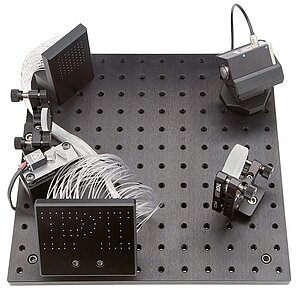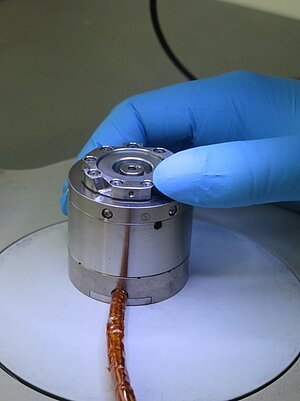Global Communication Networks
Today, the fiber optic cables connecting our planet form the backbone of the global network, without which almost nothing functions in modern societies. And while there is still a lot of work to be done in order to complete the last stretch to the end user using fiber optic technology instead of copper, we are eyewitnesses of a new race for the infrastructure for data and telecommunication networks. Several technology companies are planning to implement huge space-based communication networks of the latest generation. Their nodes are compact satellites, thousands of which will be launched into orbit. These use laser light to transmit messages, they connect to each other, and efficiently and quickly transmit data from one point on the planet to another. The vision is to provide every car, physical infrastructure, shipping container, and semitrailer, or even every cow, with connectivity; therefore, enabling a spectrum of fantastic applications.
Fiberless Photonic Networks on Earth
Also on Earth, a similar approach to providing point-to-point networks is being newly started with the help of "fiberless photonics". The principle of free space optical communication is somewhat similar to optical telegraphy from the 18th century: Messages are encoded and transmitted from one terrestrial location to another using light. This offers the potential for quickly providing secure connections between locations, e.g., from building to building in a crowded city or for the "last mile" of a wider network.
In addition to optoelectronic components and extensive communication know-how, mechatronic systems also play a decisive role in the functionality of such networks. The transmission of messages via bundled laser beams requires precise alignment solutions in order to keep the beam precisely on the target even over long distances, correct drift and interferences, and, if necessary, quickly re-align it. In addition to being controlled by the satellite location system, a fine, high-speed steering system is required to compensate for vibrations from the satellite, thermal fluctuations, and other causes of disturbances. In ground-based point-to-point networks, atmospheric turbulences or movements in buildings can also be a potential source of interference for the error-free signal transmission. Therefore, quickly reacting tip/tilt mirror systems are of essential importance for free space optical communication networks.
In addition to high bandwidths and sufficiently large tilt angles, maintenance-free function in 24/7 mode is of crucial importance for this application. Energy efficiency, low weight, and a compact design are also essential. Last but not least, robustness is required, because the systems not only have to withstand the high accelerations during satellite launch, but also the harsh environmental conditions such as strong temperature fluctuations or radiation exposure over the entire period of use.
Piezoelectric or electromagnetic tip/tilt mirrors (FSM = Fast Steering Mirrors) can provide angular resolution down to the nanorad range with a mechanical bandwidth up to the kHz range. They are compact, fast, and accurate enough to compensate for the disturbances that are common in these applications. While piezo-driven FSMs offer a higher resolution and bandwidth, electromagnetic units (usually voice coil FSMs) allow larger displacements. In order to fulfill the entire spectrum of requirements for the application, PI offers both types of mechanisms, in a standardized design and a application-specific configuration.
PI's fast tip/tilt mirror technology has been used in both terrestrial projects and space missions since the 1990s. For example, in the Solar Orbiter, a joint project between NASA and ESA, a PI beam stabilization system is in use and on its way to the sun. PI offers efficient and fast designs based on piezoelectric or electromagnetic drives – and also offers many years of experience in quickly scaling to large quantities.
PI's solutions include a large number of standardized tip/tilt systems as well as customer-specific developments. More will follow.



